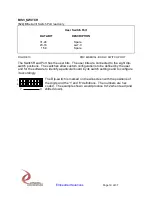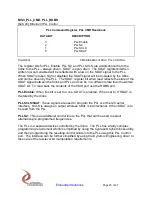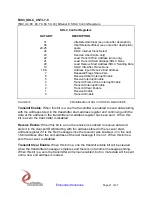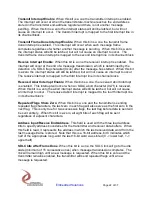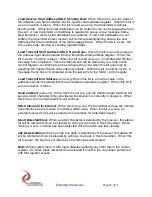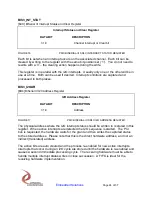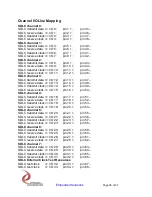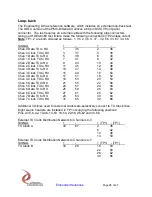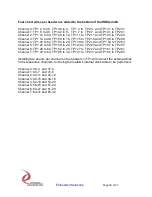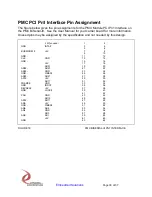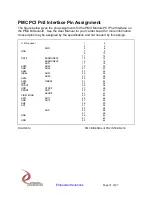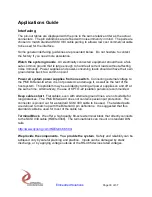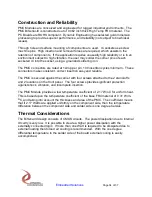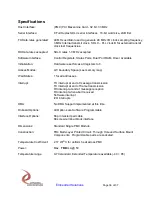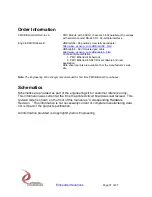
Embedded Solutions
Page 33 of 37
Applications Guide
Interfacing
The pin-out tables are displayed with the pins in the same relative order as the actual
connectors. The pin definitions are defined with noise immunity in mind. The pairs are
chosen to match standard SCSI II/III cable pairing to allow a low cost commercial cable
to be used for the interface.
Some general interfacing guidelines are presented below. Do not hesitate to contact
the factory if you need more assistance.
Watch the system grounds
. All electrically connected equipment should have a fail-
safe common ground that is large enough to handle all current loads without affecting
noise immunity. Power supplies and power-consuming loads should all have their own
ground wires back to a common point.
Power all system power supplies from one switch.
Connecting external voltage to
the PMC BiSerial-III when it is not powered can damage it, as well as the rest of the
host system. This problem may be avoided by turning all power supplies on and off at
the same time. Alternatively, the use of OPTO-22 isolation panels is recommended.
Keep cables short
. Flat cables, even with alternate ground lines, are not suitable for
long distances. The PMC BiSerial-III does not contain special input protection. The
connector is pinned out for a standard SCSI II/III cable to be used. The twisted pairs
are defined to match up with the BiSerial III pin definitions. It is suggested that this
standard cable be used for most of the cable run.
Terminal Block
. We offer a high quality 68-screw terminal block that directly connects
to the SCSI II/III cable (HDEterm68). The terminal block can mount on standard DIN
rails.
http://www.dyneng.com/HDEterm68.html
We provide the components. You provide the system
. Safety and reliability can be
achieved only by careful planning and practice. Inputs can be damaged by static
discharge, or by applying voltage outside of the RS-485 devices rated voltages.

